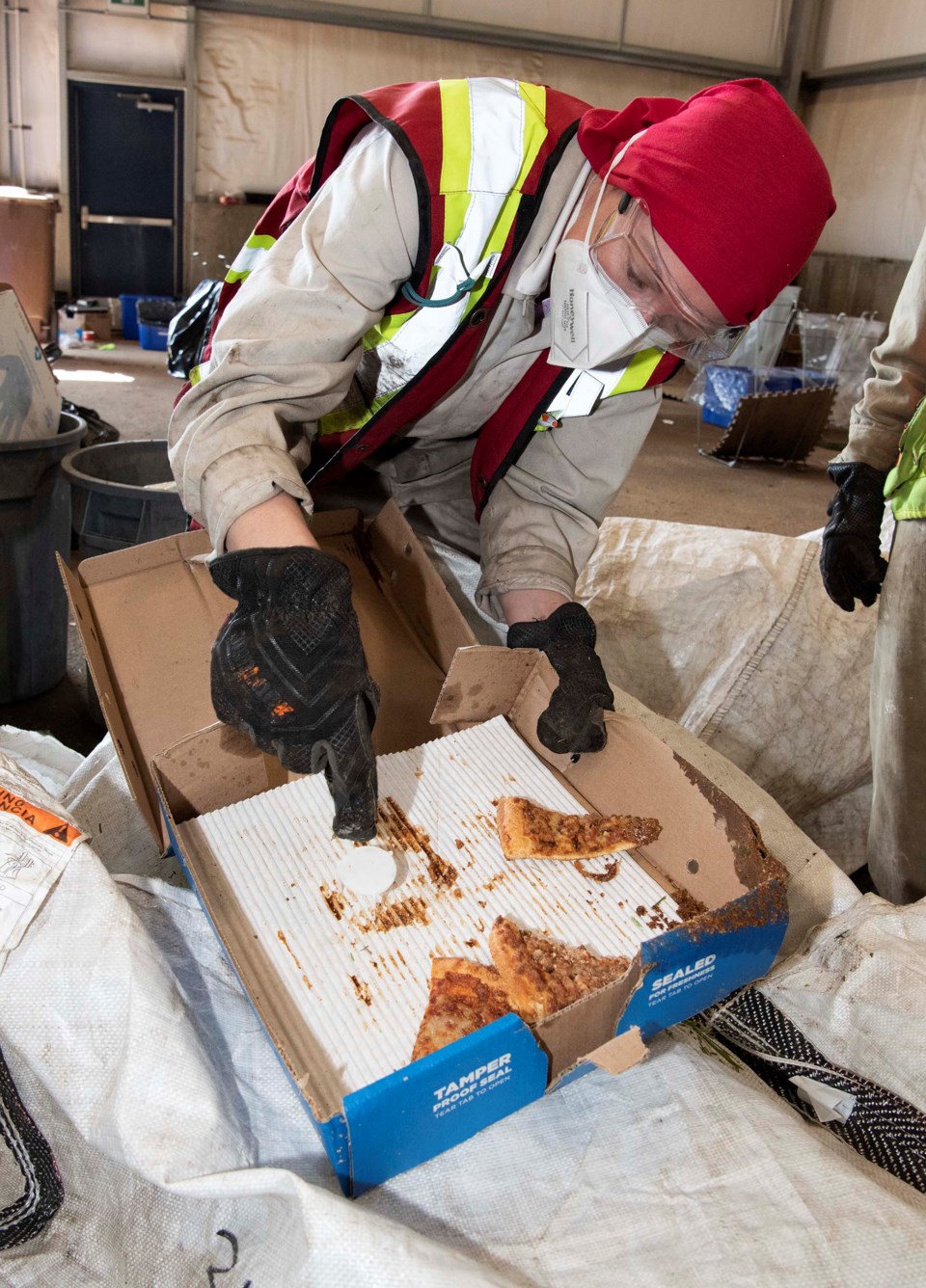It was nine days before Stacey Schaub-Szabo hit the motherload in her St. Albert trash audit.
A contractor with S-Cubed Environmental, Schaub-Szabo was hired by the City of St. Albert to do a curbside waste composition study (trash audit) of the city’s waste program. Last week, she and her crew grabbed blue bags, green bins, and brown carts from 100 random St. Albert homes (10 per day), emptied their contents into big white sacks, and hauled the trash to the city’s public works yard for examination.
This meant hours of combing through cans, bottles, tangled sticks, rotting food and grass, dog excrement, and all other matter of discarded horrors, each of which had to be sorted and weighed to determine contamination rates.
“It can be pretty gross, but it’s also kind of fun,” said contractor Andrea Hunter.
They dig trash
St. Albert waste management manager John Potter said the city commissioned this audit as part of its single-use item reduction strategy. The city has never done a formal trash audit before, and has up to this point been using estimates to calculate diversion rates. This audit will give administration the data needed to track the impact of waste-reduction strategies and help them focus their efforts.
This audit will also help the city address high contamination rates in its green bin program. St. Albert councillors heard June 7 that 41 per cent of the city’s green-bin waste collected between June 2021 and April 2022 was land-filled, not composted, because it contained unacceptable amounts of non-compostable material (i.e. contamination).
Schaub-Szabo said the first 80 homes' worth of green bins her crews examined last week were well sorted with little in the way of unacceptable material. It wasn’t until June 9 that they encountered serious levels of contamination.
“Today’s our worst day of organics,” she said.
Schaub-Szabo opened one sack of green-bin material to reveal multiple non-compostable black garbage bags nestled amongst yard waste. Other sacks contained plastic construction material, twisted plastic shopping bags, animal waste, coated Tim Hortons boxes, and perhaps most infuriatingly for Schaub-Szabo, those little plastic tables you find in pizza boxes.
“Take these out!” she said, pointing to the plastic platform.
“That needs to be removed!”
The blue bags were also problematic, with Schaub-Szabo and her crew finding plastic hangers, film wrap, and entire makeup kits within them — none of which are accepted by St. Albert’s curbside program.
“Why is there a frying pan in the recycling bin?” Schaub-Szabo asked with exasperation (frying pans should be reused or recycled at a depot).
Sorting solutions?
Inconsistent recycling standards may be one reason for St. Albert’s waste-sorting woes. Edmonton says to put pizza boxes in the blue bag, for example, but St. Albert’s waste contractor (Green for Life Environmental Ltd.) wants them in the green bin, noted city waste and diversion operations supervisor Katie Burd. Calgary permits compostable containers and pet waste in its green bin because it has a high-temperature indoor composter which can destroy those items. Roseridge Landfill does not, as it uses low-temperature outdoor windrows.
“It’s not consistent across the region, which is confusing,” Burd said.
Alberta’s upcoming extended producer responsibility legislation could help by creating a common list of recyclable items for all communities, Burd said.
Burd said the city will do a second trash audit this September to track the effects of this summer’s waste education efforts and find any seasonal waste patterns. She suspected the audit would find higher green-bin contamination rates this fall, as there will be less yard waste in the bins to offset contaminants.
Administration is set to report the results of the trash audit along with recommendations on how to improve the city’s waste reduction program by March 2023.



